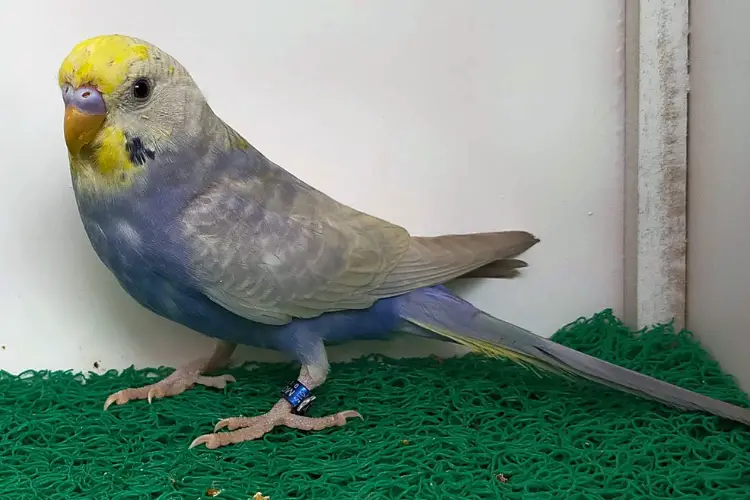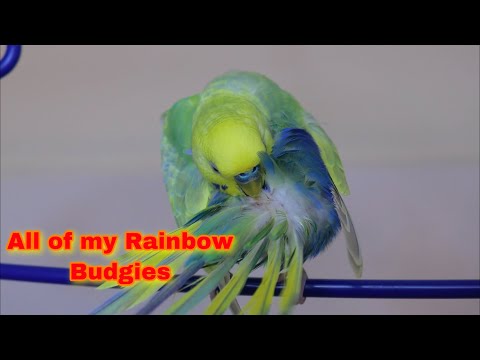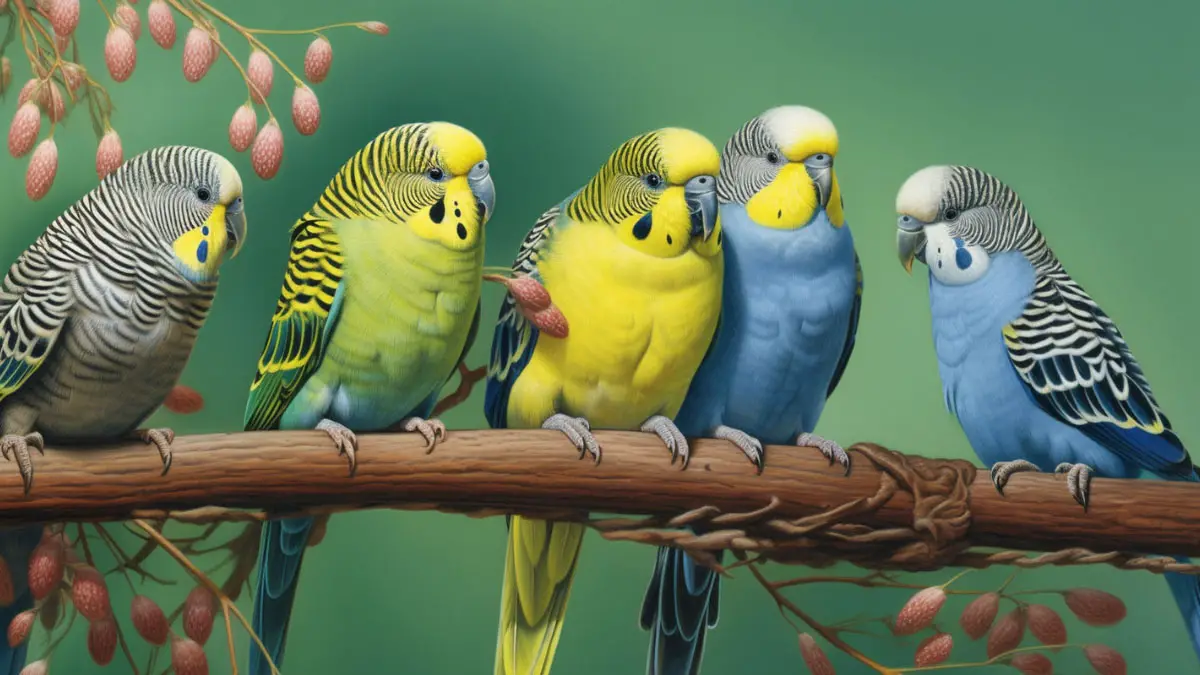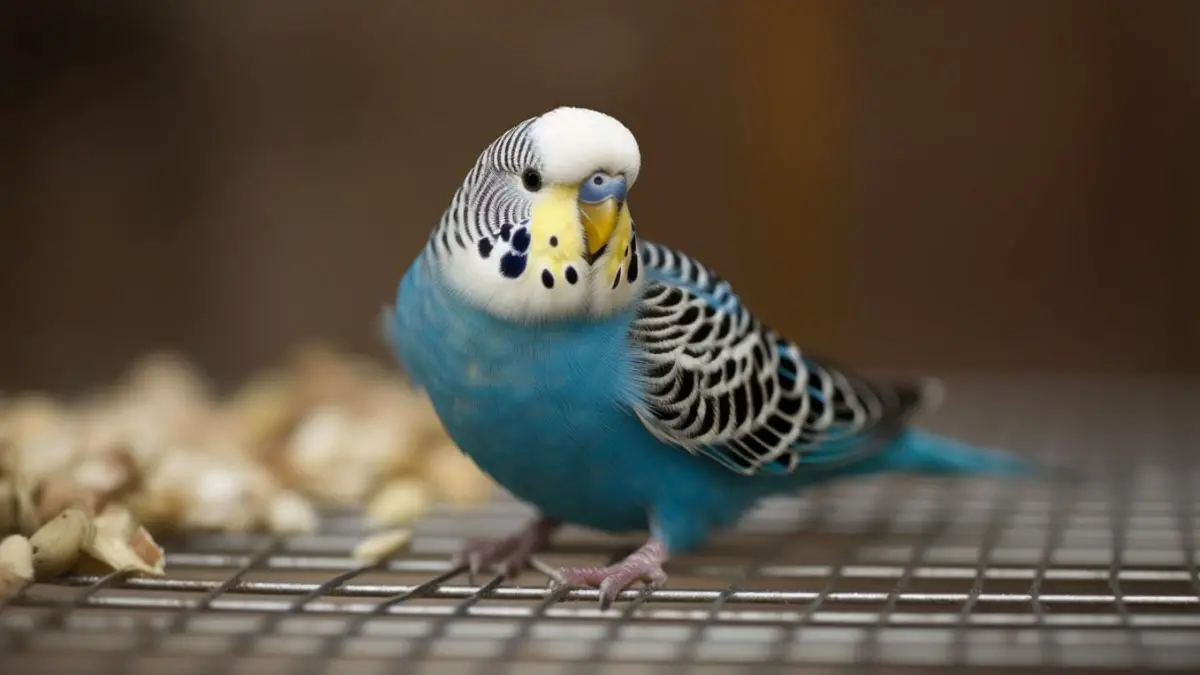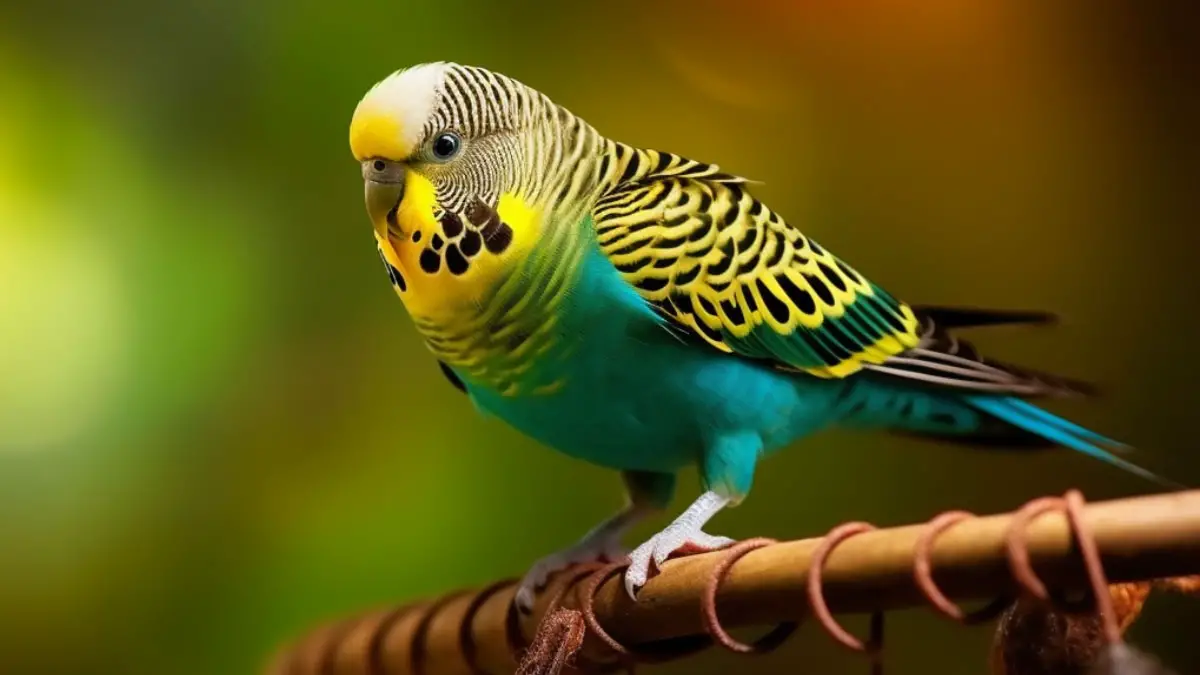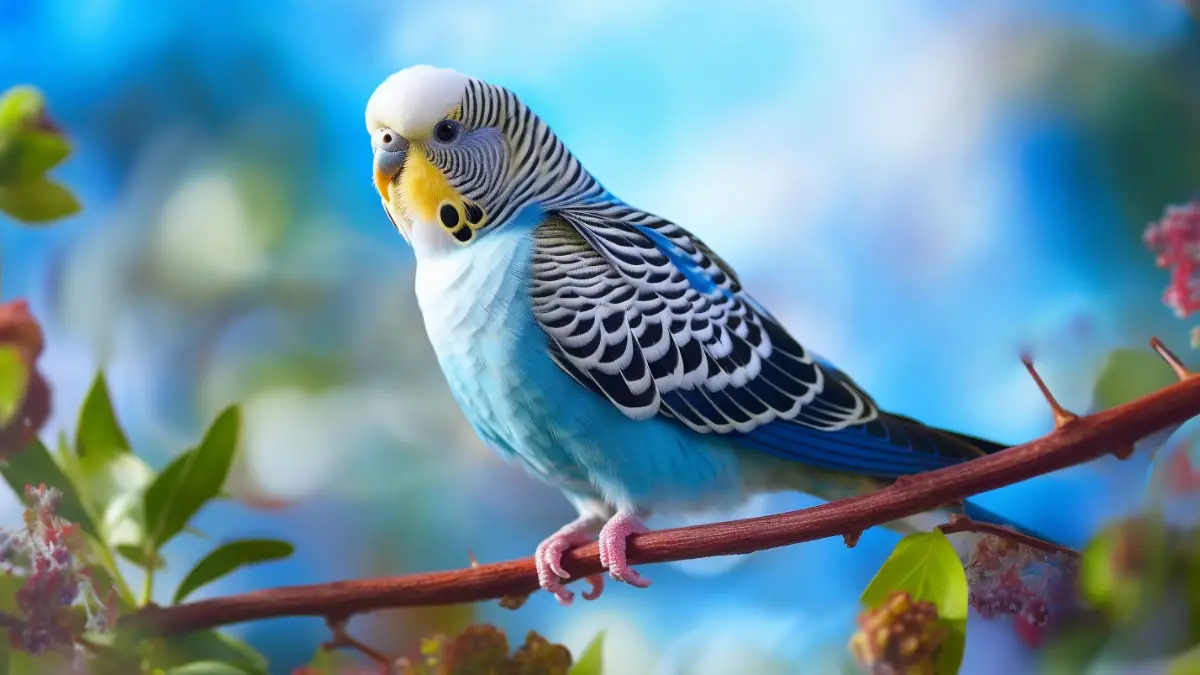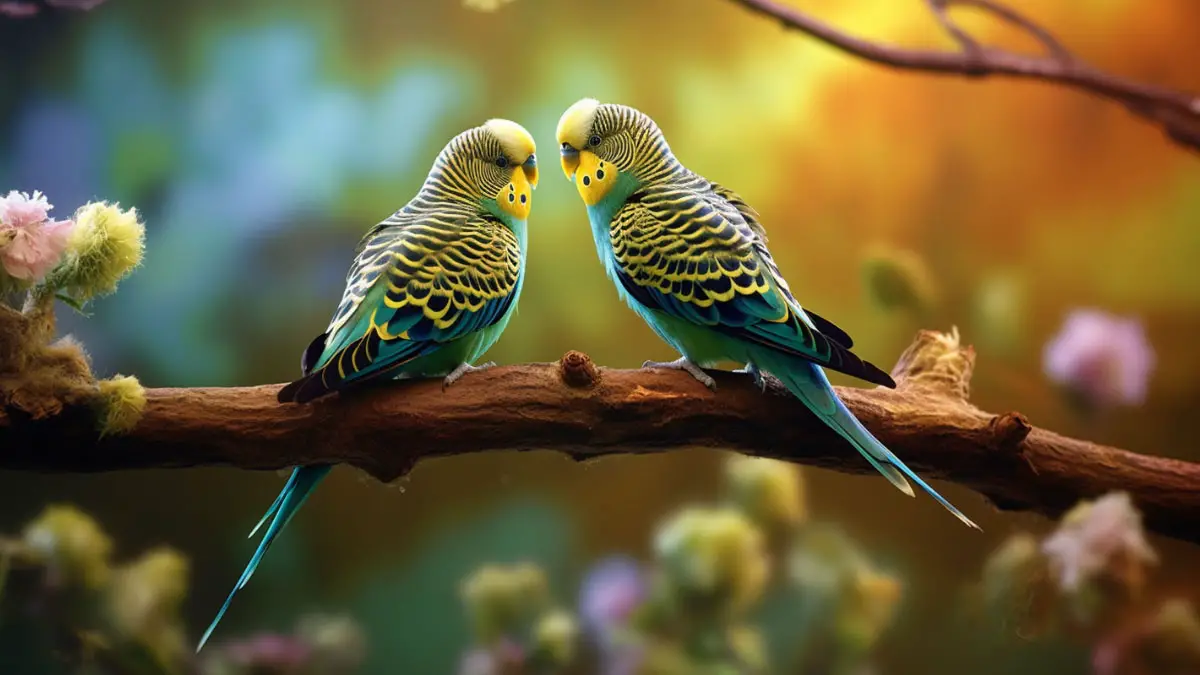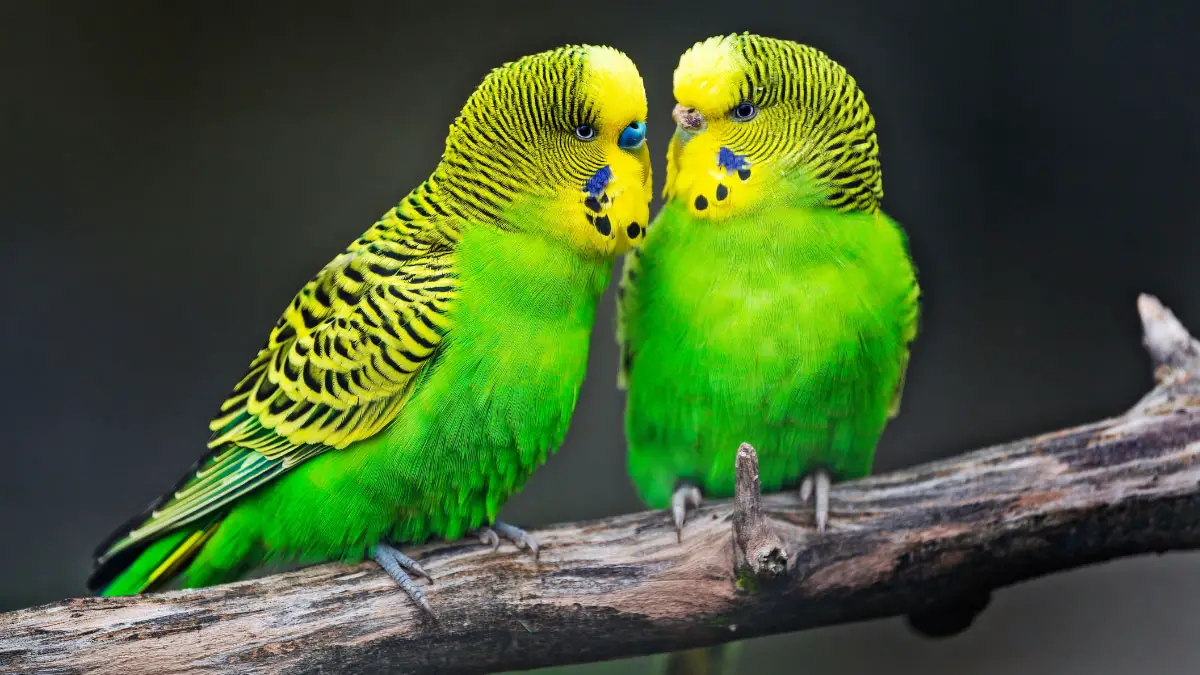Budgies come in over one hundred colors, with the two primary colors being blue and green. However, some parakeets have many subtle colors reminiscent of a rainbow hence the name rainbow budgies. For this reason, most budgie owners always ask, how to breed rainbow budgies?
Breeding rainbow parakeets can be a lengthy process. You must first pair up a yellow male face with a female clearwing mutation. Then, from the results you get for the male budgies, you combine them with clearwing females. Lastly, you should pair the female rainbow budgies with male yellow-face budgies.
But how, then, do you tell the difference between a true rainbow budgie and other colorful parakeets? Our guide has all the answers to your questions about breeding rainbow budgerigars.
What Is A Rainbow Budgie?
Rainbow budgie is a type of bird species consisting of various color mutations. There is the opaline, clearwing, yellowface, and blue series. The clearwing can also be full-body greywing budgerigar mutation. As such, this bird species has coloration similar to a rainbow.
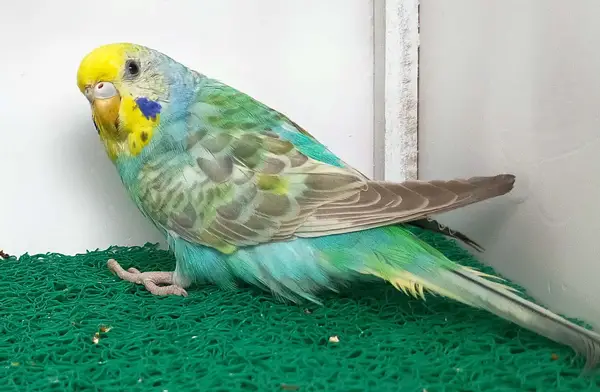
However, unlike the common parakeet or budgerigar, rainbow budgie colors are not very bright or solid. The colors usually blend in. That said, based on the color mutations, rainbow budgies come in various variations, including:
Blue Series
The Blue series variation has 5 colors: gray, mauve, sky blue, cobalt, and violet. Because of the striking colors, the blue series make an excellent candidate for breeding rainbow budgies.
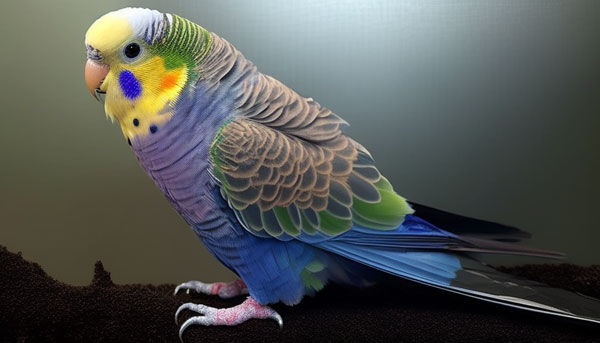
Clearwing
Clearwing bird variations have no marking on the body, but their flight feathers are light-gray in color. This variation simply helps dilute the color of rainbow budgie’s feathers, contributing to their pastel effect.
Opaline budgerigar mutation
Budgies belonging to this variation have markings that begin from the shoulder, with the head being clear. Their bodies are brightly colored, while the wings and tails have reduced amounts of black stripping compared to normal budgies.
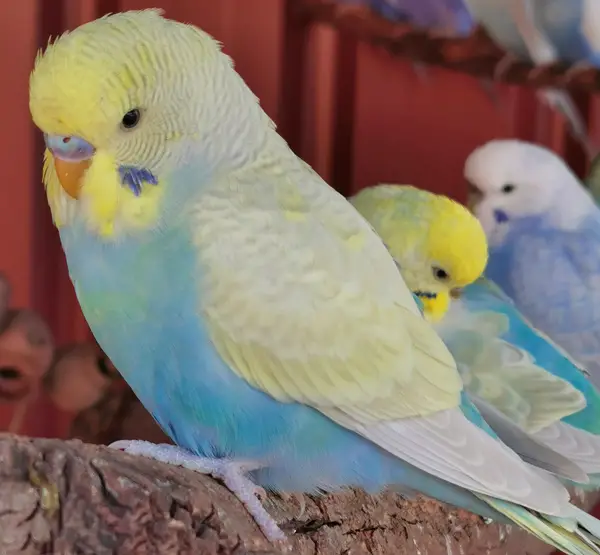
Yellow face or golden face
As the name suggests, these birds have yellow or golden faces. This variant also has variations such as the mutant 1, 2, and golden face, which you can use to breed rainbow budgies. However, the mutant 2 variant is the best for rainbow parakeets.
How To Breed Rainbow Budgie?
Breeding true rainbow budgies is challenging because the clearwing mutation is not frequent. In addition, you need the male parent to have an opaline budgerigar mutation or split for opaline.
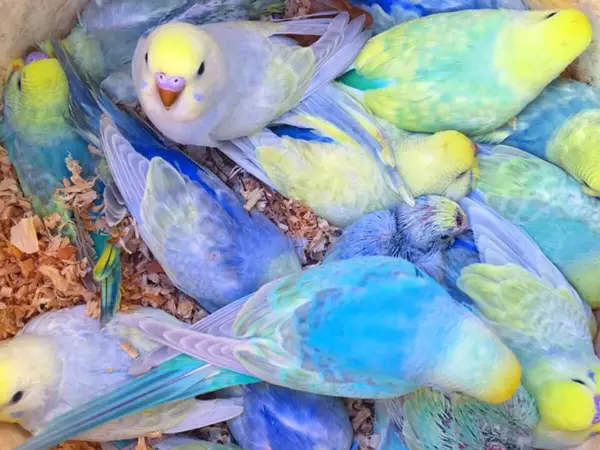
Also, both parents must have shades of blue or be clearwing or split for either color. More so, at least one parent must be clearly yellowface. Keeping the above in mind, below is a step-by-step guide on how to breed rainbow budgerigars.
Step 1: Pair up yellow face and clearwing mutations
Get a male budgie with a yellow face or opaline blue or golden face and pair it with a female having a clearwing blue mutation. You should end up with yellow-face, blue, or golden-face male budgies split for clearwing and opaline from this combination.
Meanwhile, your female baby budgies should have yellow face opaline mutation and split for clearwings.
Step 2: Combine yellow males and clearwing females
Next up, pair up yellow face blue or golden-face male budgies and clearwing blue females. For the males, you should use the results in step one. And from this combination, you should end up with around 25% pure female rainbow chicks.
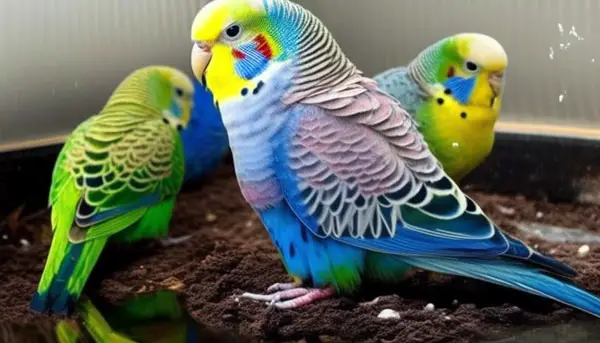
Step 3: Final pairing
Lastly, get your male yellow-face blue budgies split to clearing and opaline from step one results. Then, pair them up with the female rainbow budgerigars from the results in step two. You should have at least 100% male and female rainbow chicks from the pair-up.
Rainbow Budgie Mutation Chart
If you are thinking of breeding rainbow parakeets, here is a mutation chart to help you with the process. You could also use a budgie mutation calculator for accurate information on the color mutation and gender of the budgies.
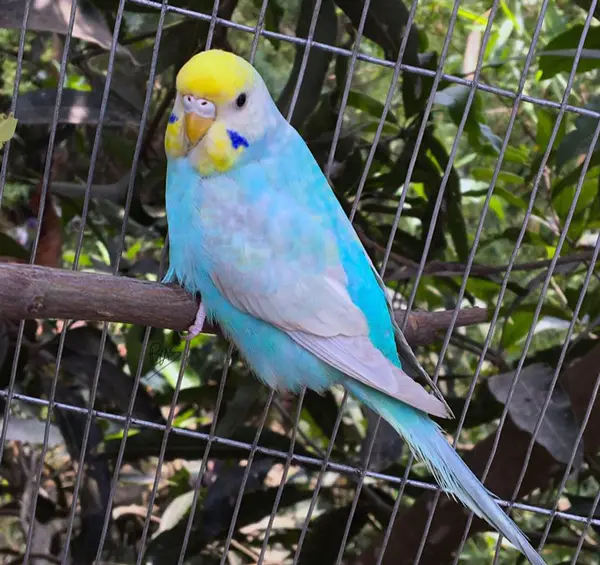
| Stages of Mutation | Type Of Pairing Required | End Results |
| Stage One | Male yellow or golden face, opaline blue + Female clearwing blue | Yellow face blue or golden face male chicks (split for clearwing and opaline).Yellow face opaline female chicks (split for clearwings). |
| Stage Two | Male yellow face blue or golden face (from stage one end results) + clearwing blue females | Female rainbow chicks with varying percentages of about 25%. |
| Stage Three | Male yellow face blue budgies split for clearwing and opaline (from stage one results) + female rainbow parakeets (from stage two results) | Complete male and female rainbow chicks with different variations. |
How Do You Know If Your Budgie Is Rainbow?
Determining whether your budgie is a rainbow or not can be challenging. This is because most birds identified as rainbow budgies are not. So, below are tips to help you know if your parakeet is a genuine rainbow bird.
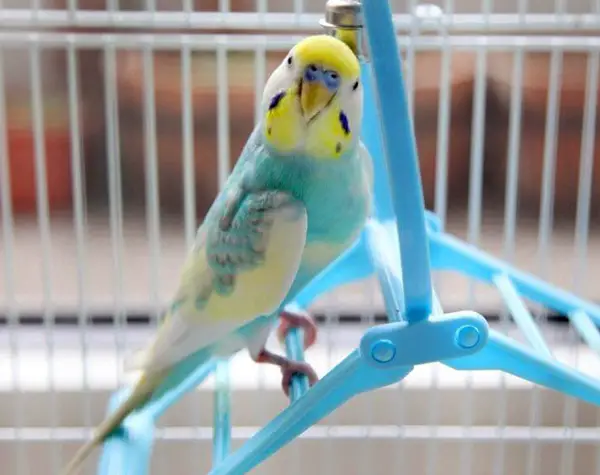
1. Color of the eyes
One way to identify a rainbow budgie is to check its eye color, which should be black at maturity. Its iris, on the other hand, should be white in color.
2. Full body color
A rainbow budgie features a full body color of cobalt, blue, mauve, or sky. However, these birds’ body color tends to be diluted for parakeets with the dark factor gene, such as violet.
3. Wings and feathers
The flight feathers should be pale gray because of the clearwing mutation. On the other hand, the wings should be off-white with yellow, opalescent blue, and green markings.
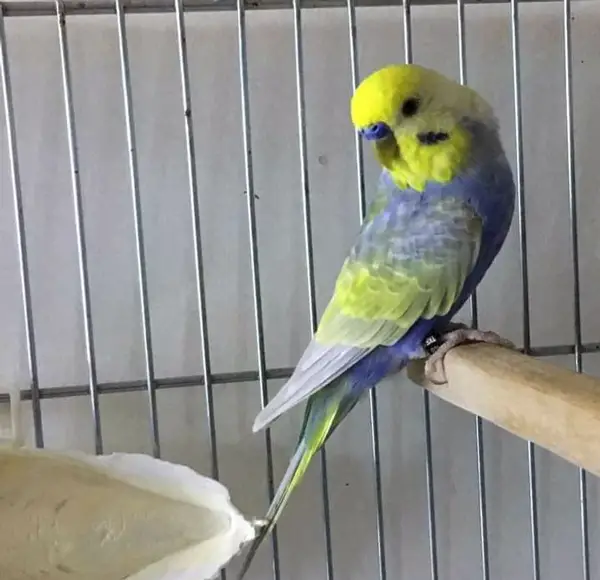
3. Feet and legs
Both the legs and feet of rainbow budgies are grayish or whitish in color due to the shades of blue, a dark genetic factor.
5. Cheek patches
The color varies from medium purple to deeper purple or simply violet.
6. Tail feathers
Unlike the flight feathers, the tail feathers are gray and boast a deep body color, with some areas being lighter. The shorter tail feathers have a flushed yellow color.
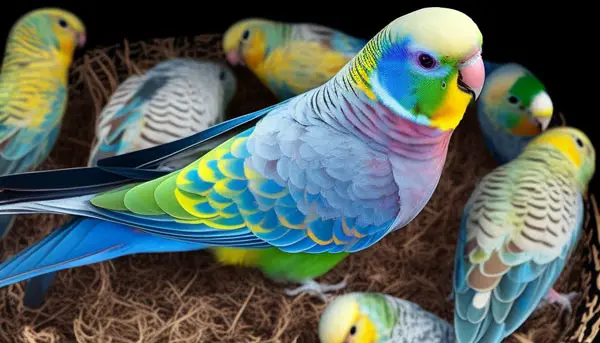
7. Cere color
A true male rainbow budgie has a cere that is medium to deep blue in color. On the other hand, female rainbow parakeets’ cere is light blue or white in color. But during the breeding season, the color of the female’s cere is usually bronze and deep blue for the males.
8. Head mask
Because of the golden or yellow face mutation, a rainbow budgie’s head mask can be yellow or golden-yellow.
Below is a video of what rainbow budgies look like:
What Determines What Color Babies Will My Budgie Have?
Several things can determine what color your baby budgies will have. These include:
Base color
The base color can either be yellow or white-based pigment. For the yellow feathers pigmentation, it comprises dark and light green, olive, yellow, and gray-green colors. White-based includes cobalt, gray, mauve, white, violet, and sky-blue colors.
But overall, the green or yellow-base color is dominant, while the white or blue pigment is recessive. So, if you breed a yellow-based and white-based parakeet, you will end up with yellow-based budgie babies.
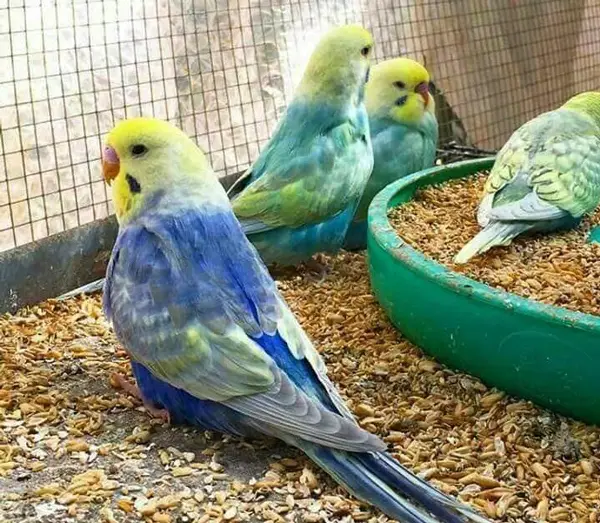
Presence of a dark factor
Every budgie has some level of dark factor ranging from zero dark, one dark, and two dark elements. Now, if you breed a budgie with two dark factor genes, the results will be olive or mauve rainbow budgie. On the other hand, breeding parakeets with one dark factor will result in a little darker blue babies (cobalt variety).
Color-adding factor
Two types of color-adding factors may determine the color of your baby budgerigars, including gray and violet. The Grey factor is the dominant one. So, when you breed yellow-based birds with budgies having a gray factor, the babies will be gray-green in color. If you pair white-based parakeets with birds with a gray factor, the results will be gray-colored babies.
Unlike gray, violet is a semi-dominant color-adding factor. This color factor usually darkens the green body color of budgies. For most baby budgies, you may spot a violet tinge color on their body feathers, especially near their feet.
Cinnamon mutation
The cinnamon budgerigar mutation also affects the color your baby budgies are likely to have. Since it is a diluting mutation, cinnamon chicks have redder skin than normal budgies, while the eyes are deep plum-colored. The tail feathers of the baby budgies are paler in color.
Rainbow Budgie Price
An average rainbow budgie costs between $30 and $90, while an exotic breed costs over $100. These prices usually vary because of factors like if the bird has already been hand-tamed. Also, the budgie’s color, rarity, and age affect the price. Other factors include:
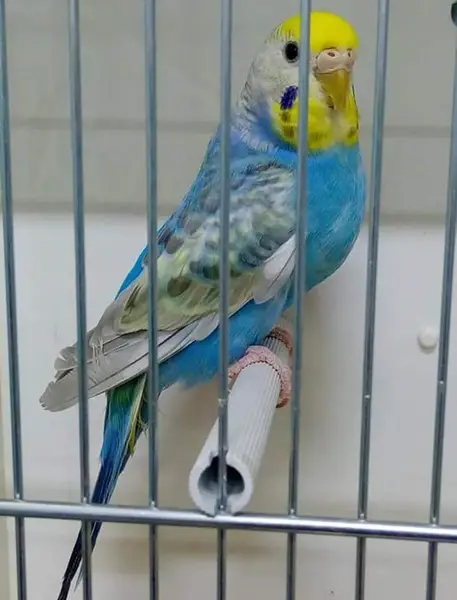
Hand or parent-fed budgie
Hand-fed rainbow parakeets are more expensive than their parent-fed counterparts because the process is time-consuming.
Availability of the rainbow budgies
If there is a shortage of rainbow budgies in your locality and the demand is high, the birds will be slightly more expensive.
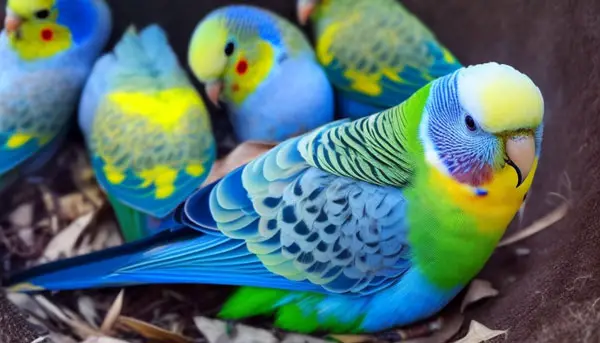
Locality
For example, a rainbow budgie costs between Rs.80 to Rs.1000 in India. This is equivalent to $10 and $12. However, in the U.S., rainbow parakeets cost over $30.
Buying from a breeder or pet store
It is cheaper to buy your rainbow budgie from your local breeder than from a pet store. This is because pet stores also get the birds from breeders.
What Is The Difference Between Rainbow Spangle And Rainbow Budgie?
There is the delusion that the rainbow spangle budgie is also a rainbow budgie because they look almost identical. However, these two budgie species are different.
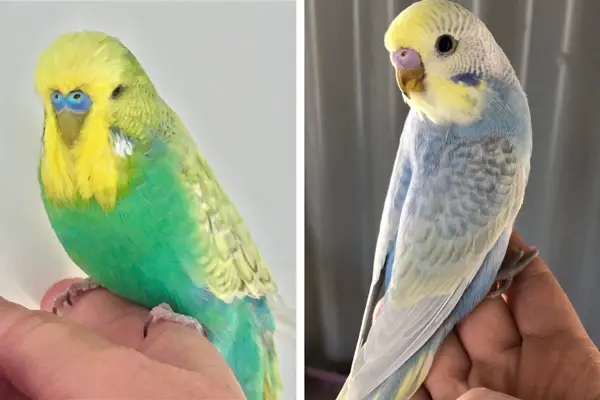
The main difference is that rainbow spangle birds are bred using the spangle mutation instead of the clearwing mutation like rainbow budgies. This is because the clearwing variety is not popular. As such, spangle rainbow budgies are not true rainbow parakeets. Other differences include:
- The spangle has a black marking on the wing feathers
- Spangle has yellow/white partially or missing throat spots
- The tail feathers are plain white/yellow or with a thin line
Is Pastel Rainbow Budgie Same as Rainbow Budgie?
Yes, because rainbow budgies comprise a variety of pastel colors. Pastel refers to the less saturated or lighter shade of rainbow budgie’s feather. So, the pastel rainbow budgie is like a variation of the rainbow budgie but does not refer to any mutation.
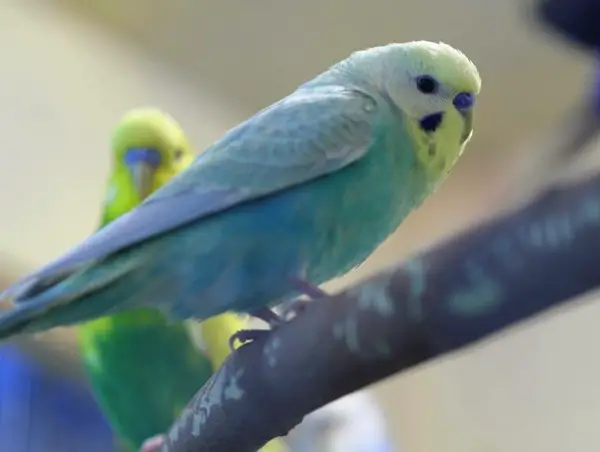
Generally, the clearwing mutation is responsible for creating the pastel effect in these budgie species. However, not all rainbow parakeets are pastel in color; some are more pastel than others. The pastel color is usually achieved by pairing up a normal rainbow budgie with a dark budgerigar mutation having two dark factors.
FAQs
Have more queries about the rainbow budgie variations, including the opaline budgerigar mutation? Check out these commonly asked questions.
Like other budgie species, the rainbow parakeet can live between 5 to 10 years in captivity. This is as long as you take good care of your bird by feeding it a balanced diet comprising seed mixes, fruits, and veggies.
No, because the clearwing mutation needed for breeding true rainbow budgies is sporadic. However, the spangle rainbow budgie is very common since the spangle mutation is also prevalent.
Apart from a local breeder, you can buy a healthy rainbow budgie at a pet store near you or online stores. You can also get a rainbow parakeet from a bird show and rescue centers.
Outro
Not every budgerigar with rainbow colors qualifies to be called a rainbow budgie. Therefore, knowing how to breed a rainbow budgie and identify one is critical. This is because breeding rainbow budgies requires the right genetics, including yellow face, clearwing, opaline, and blue genes.
